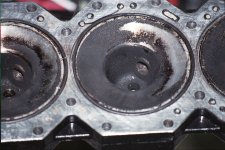JimS123
Fleet Admiral
- Joined
- Jul 27, 2007
- Messages
- 8,328
As a teenager with Grandpa's old 1955 10HP Mercury I used to rent an old tinny up the creek and terrorize the ducks on the Erie Canal with my buddies.
But I DID religiously use "good" oil and kept to the 24:1 ratio. I bought Quaker State 2-stroke OB OIL because that 's what they sold at KMart.
One year I having smoking and running problems, so I took the motor to my local Mercury dealer. Rather than going to the retail store first I simply went to the back door at the shop.
The manager there said it would be a diagnostic fee and it would take weeks. But he offered to let me dunk it in his test tank and listen for free. I started it up and he immediately said shut it down. "You have been using Quake State OB motor oil". I said, OMG that's true. He gave me a bottle of Mercury oil and said good luck.
All these years I still have an old empty plastic bottle of QS, just for nostalgia.
That's my oil thread for the day......LOL.
But I DID religiously use "good" oil and kept to the 24:1 ratio. I bought Quaker State 2-stroke OB OIL because that 's what they sold at KMart.
One year I having smoking and running problems, so I took the motor to my local Mercury dealer. Rather than going to the retail store first I simply went to the back door at the shop.
The manager there said it would be a diagnostic fee and it would take weeks. But he offered to let me dunk it in his test tank and listen for free. I started it up and he immediately said shut it down. "You have been using Quake State OB motor oil". I said, OMG that's true. He gave me a bottle of Mercury oil and said good luck.
All these years I still have an old empty plastic bottle of QS, just for nostalgia.
That's my oil thread for the day......LOL.




















